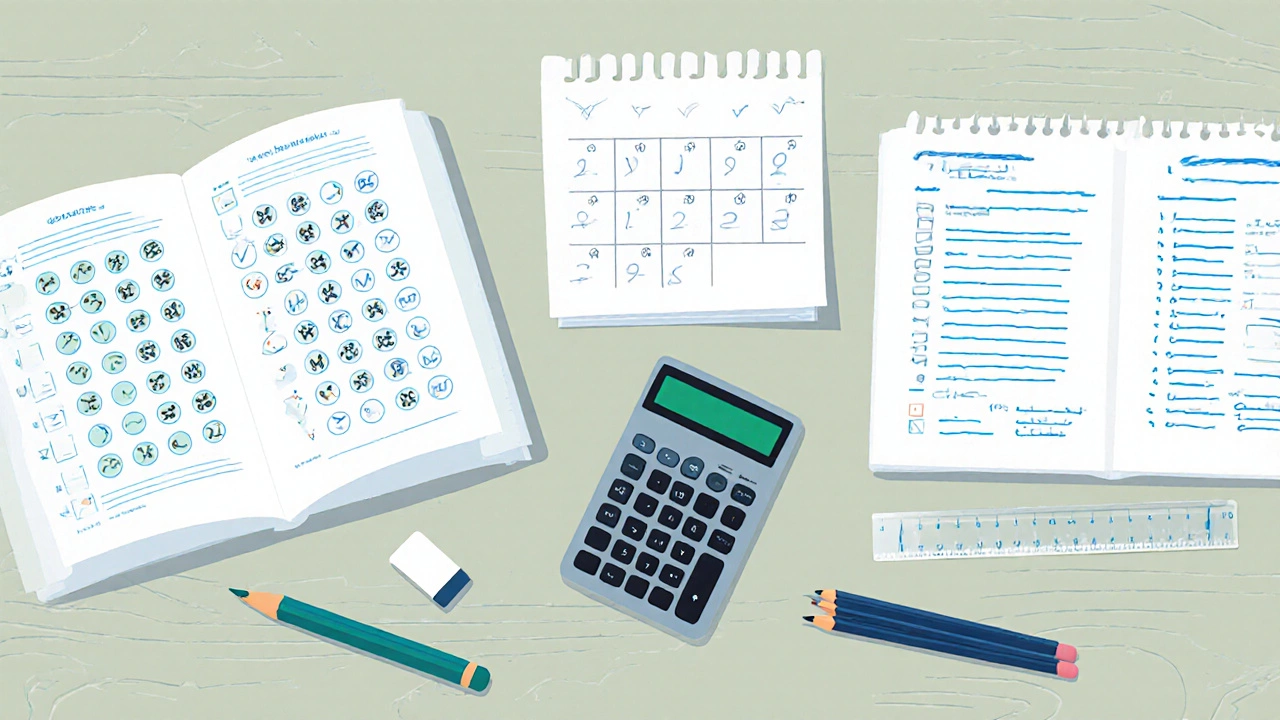JEE Main Score Eligibility Checker
Check Your JEE Advanced Eligibility
Enter your JEE Main score (out of 360) to see if you qualify for JEE Advanced based on current trends.
Your Eligibility Status
Every year, hundreds of thousands of students stare at two acronyms on their college‑admission checklist: JEE Main vs JEE Advanced. The pressure to choose the right path can feel overwhelming, especially when both exams promise a seat in India's top engineering institutes. This guide pulls apart the two tests, line‑by‑line, so you know exactly which one you need to tackle and how they shape your future.
Quick Takeaways
- JEE Main is the gateway exam; you need to clear it to qualify for JEE Advanced.
- JEE Main scores decide eligibility for NITs, IIITs, and other centrally funded institutes.
- JEE Advanced is the only route to the 23 IITs; its pattern is tougher and more conceptual.
- Both exams have different eligibility criteria, exam patterns, and scoring mechanisms.
- Tailor your preparation strategy to each test’s unique demands for the best chance of success.
What is JEE Main?
JEE Main is a national level entrance test conducted by the National Testing Agency (NTA) for entry into undergraduate engineering programs across India. It serves two main purposes:
- Determine eligibility for the JEE Advanced exam.
- Allocate seats in NITs, IIITs, and other centrally funded technical institutions via the JoSAA counselling process.
Key attributes of JEE Main:
- Eligibility: Candidates must have passed the 12th grade (or be appearing) with Physics, Chemistry, and Mathematics. No minimum percentage is required, but a minimum cutoff is set each year.
- Exam Mode: Both online (computer‑based) and offline (pen‑and‑paper) modes are offered, though the majority opt for the online version.
- Pattern: Two papers - Paper‑1 (B.E./B.Tech) and Paper‑2 (Architecture). Paper‑1 contains 90 multiple‑choice questions: 20 each from Physics and Chemistry, and 30 from Mathematics. Each correct answer fetches 4 marks; each wrong answer incurs a -1 mark penalty.
- Scoring: Total marks = 360. Normalisation is applied when multiple sessions are held.
- Frequency: Conducted four times a year (January, April, July, October).
What is JEE Advanced?
JEE Advanced is the elite exam that locks doors to the Indian Institutes of Technology (IITs). Only the top‑scoring candidates from JEE Main are invited to sit for this examination.
Key attributes of JEE Advanced:
- Eligibility: Must rank within the top 2,50,000 (including all categories) in JEE Main and have taken Physics, Chemistry, and Mathematics in 12th grade.
- Exam Mode: Exclusively computer‑based, with two papers held on the same day. Both papers are compulsory; you must attempt each.
- Pattern: The syllabus mirrors JEE Main but questions are deeper and more analytical. Paper‑1 and Paper‑2 each contain 54 questions split across Physics, Chemistry, and Mathematics, featuring multiple‑choice, numerical‑answer, and matching‑type questions. No negative marking for most sections, but some multiple‑choice sections retain a -1 penalty.
- Scoring: Each paper is out of 360, making the total 720. The ranking is based on the aggregate of both papers.
- Frequency: Held once a year, typically in May.

Side‑by‑Side Comparison
| Aspect | JEE Main | JEE Advanced |
|---|---|---|
| Conducting Body | NTA | IIT‑JEE Board |
| Purpose | Eligibility for JEE Advanced + admission to NITs/IIITs | Admission to 23 IITs |
| Eligibility to Appear | 12th grade pass in PCM | Top 2.5 lakh JEE Main rank + PCM |
| Frequency | Four times a year | Once a year |
| Exam Mode | Online & offline | Online only |
| Number of Papers | Two (Paper‑1 B.Tech, Paper‑2 Architecture) | Two (Paper‑1 & Paper‑2, both mandatory) |
| Total Marks | 360 | 720 |
| Question Types | MCQ only (4 marks + negative) | MCQ, Numerical Answer, Matching; less negative marking |
| Cut‑off | Varies by year & category | Based on rank list, no fixed cutoff |
| Result Usage | JoSAA counselling for NITs/IIITs | IIT admission via JoSAA |
How the Scores Translate into College Seats
Clearing JEE Main opens the door to the JoSAA (Joint Seat Allocation Authority) portal, where IIT (Indian Institutes of Technology) appear only after you also clear JEE Advanced. For most aspirants, the journey looks like this:
- JEE Main Score: Determines your ranking among all test‑takers. The top 2.5 lac rankers receive an invitation to JEE Advanced.
- JEE Advanced Rank: Directly maps to seat allotment in the 23 IITs. Higher rank equals better chances for coveted branches like Computer Science or Electrical.
- JoSAA Counselling: After JEE Main, you can also apply for NITs, IIITs, and other GFTIs (Government Funded Technical Institutes). Your JEE Main All‑India Rank (AIR) decides the order of preference.
It’s crucial to remember that a strong JEE Main score does not guarantee an IIT seat; you still need to excel in JEE Advanced.

Common Misconceptions & Pitfalls
- “If I crack JEE Main, I’m set for IITs.” Wrong. Only Advanced holders get IIT seats.
- “JEE Advanced is just a harder JEE Main.” Not exactly. Advanced tests deeper conceptual understanding and problem‑solving speed.
- “You can skip JEE Main practice if you aim for Advanced.” A bad idea. The JEE Main syllabus forms the base; many Advanced questions build on it.
- “Negative marking doesn’t exist in Advanced.” Some sections still penalise wrong answers; reading the instruction sheet is vital.
Targeted Preparation Strategies
Knowing the exam‑specific demands lets you channel your effort efficiently.
For JEE Main
- Focus on Speed: Since the test has 90 questions in 3 hours, practice full‑length mock papers under timed conditions.
- Master Core Concepts: Prioritise NCERT Physics, Chemistry, and Mathematics; most JEE Main questions derive directly from them.
- Formula Sheet: Create a compact list of key equations and memorize them; quick recall saves minutes.
- Negative Marking Tactics: Guess only when you can eliminate at least two options.
For JEE Advanced
- Dive Deeper: Go beyond NCERT-use H.C. Verma (Physics), O.P. Tandon (Chemistry), and I.A. Sharma (Mathematics) for advanced problem sets.
- Conceptual Links: Many Advanced questions combine two subjects; practice integrative problems.
- Numerical Answer Practice: Unlike Main, Advanced includes answer‑type questions; get comfortable with calculator‑free computation.
- Analyze Past Papers: Over the last 5 years, identify recurring topics (e.g., Mechanics, Organic Chemistry, Coordinate Geometry) and allocate extra study time.
Frequently Asked Questions
Do I need to appear for JEE Main every year?
You can attempt JEE Main up to three times in a single admission year (January, April, July, or October). Many students retake it to improve their rank before qualifying for JEE Advanced.
What is the minimum score required for JEE Advanced?
There is no fixed cutoff. Admission is based on rank. In 2024, the opening rank for general category IITs was around 2,00,000, which roughly corresponded to a JEE Main score of 85‑90 percentile.
Can I apply for NITs if I clear JEE Advanced?
Yes. A JEE Advanced qualified candidate also holds a valid JEE Main rank, which is used for NIT/IIIT seat allocation via JoSAA.
Is there a negative marking in JEE Advanced?
Only certain sections (multiple‑choice with one correct answer) carry a -1 penalty. Numerical answer and matching sections have no negative marking.
How many attempts are allowed for JEE Advanced?
You can appear for JEE Advanced a maximum of two times in your lifetime, provided you meet the JEE Main rank requirement each time.
Understanding the nuanced differences between JEE Main and JEE Advanced not only clears up the confusion but also lets you plan a smart preparation roadmap. Whether you aim for an NIT, an IIT, or any other premier engineering college, aligning your study strategy with each exam’s unique demands will boost your chances of a seat in the college of your dreams.



